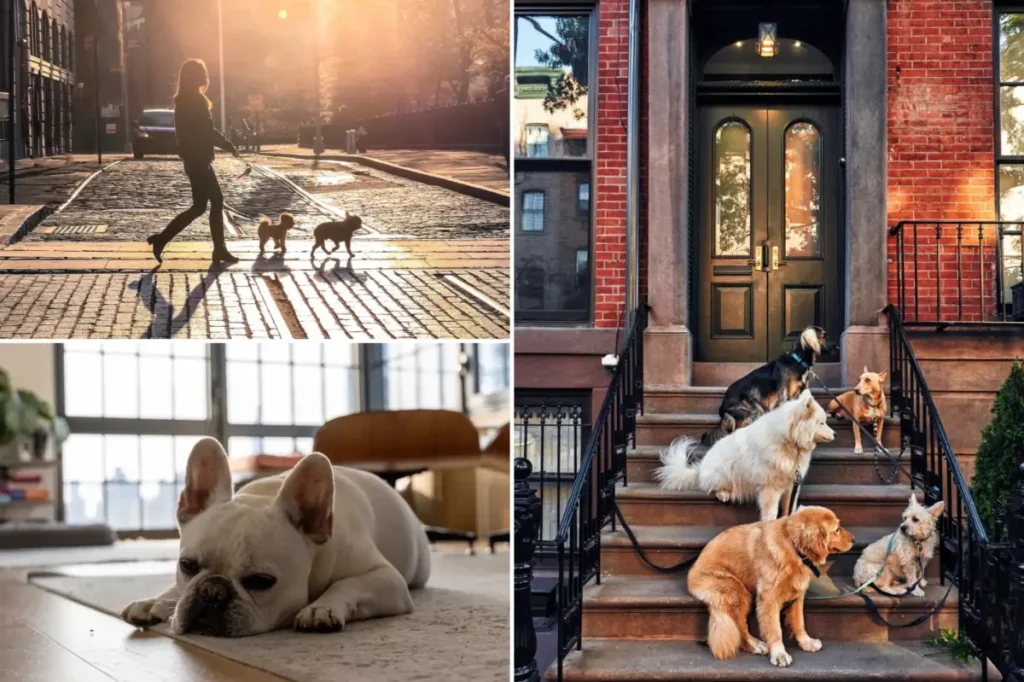The Real Cost of Pet Ownership in America’s Rental Market
In a nation where pets are cherished members of nearly 94 million households and contribute to a staggering $152 billion in annual pet-related spending, finding an affordable, pet-friendly rental has become an increasingly important consideration for many Americans. A recent study by RentCafe has shed light on this intersection of pet ownership and rental housing, ranking cities across the United States based on their pet-friendliness and associated costs. The findings reveal significant regional disparities, with some cities offering welcoming environments at reasonable costs while others—most notably New York City—impose substantial financial barriers for pet-owning renters. This geographic lottery of pet-friendly housing options underscores a broader challenge facing millions of Americans who consider their pets non-negotiable family members, even as they navigate the complexities of the rental market.
For New York City residents, the joy of pet companionship comes with a particularly steep price tag. Ranking seventh in the Northeast region for pet-friendly rental availability, the Big Apple demands nearly $300 above the national average in pet-related rental costs, with New Yorkers paying an average of $822.92 in combined deposits and fees. Only Jersey City rivals this expense, with its residents facing even higher costs totaling around $900. Beyond these initial expenses, New York City pet owners also contend with ongoing monthly pet rents averaging $64.42—an amount nearly equivalent to what many New Yorkers spend on their monthly subway commutes. This premium stands in stark contrast to the national average, where pet owners typically pay around $35 monthly across both small and large cities, alongside refundable deposits of just over $300 and non-refundable fees averaging $315. Despite these financial hurdles, New York City’s pet culture thrives with specialized parades, gourmet pet bakeries, and well-maintained parks—testaments to the city’s paradoxical combination of high costs and deep appreciation for animal companionship.
The silver lining for New York City pet owners lies in the availability of pet-friendly housing options, with approximately 75% of the city’s rental inventory welcoming furry residents. This figure approaches the Northeast regional average of 80%, suggesting that while expensive, New York does not suffer from a severe shortage of pet-accommodating properties. This relative abundance of options provides some consolation for city dwellers determined to maintain their animal companionship despite the financial premium. However, even with this availability, the combination of high rental costs in general and additional pet expenses creates a significant financial burden that many prospective pet owners must carefully consider before adopting or relocating with their animals. The situation reflects the complex trade-offs that urban dwellers often face when balancing the emotional benefits of pet ownership against practical financial considerations in high-cost metropolitan areas.
The landscape for pet-owning renters brightens considerably across the Southern and Midwestern regions of the United States, where both areas boast impressive pet-friendly rental stock shares of approximately 83%. This regional openness to pets represents a significant advantage for renters in these areas, potentially alleviating some of the stress and financial burden associated with finding suitable accommodations for both human and animal family members. At the state level, Oklahoma emerges as a particularly welcoming environment for pet owners, with more than 92% of apartment stock allowing pets—a statistic likely enhanced by the state’s abundant space and natural landscapes ideal for active pets. Nevada follows closely behind with 92.16% of rentals accepting pets, while Arkansas rounds out the top three with 91.23%. These figures suggest a more pet-inclusive rental culture in states with lower population densities and potentially more relaxed property management approaches.
At the metropolitan level, the study identified Oak Park, Illinois as the ultimate pet owner’s paradise, earning the highest overall pet-friendly score nationwide. This Chicago suburb combines remarkably low pet fees—averaging just $250—with an extraordinary availability of welcoming apartments, which make up 95.51% of the local rental inventory. Such statistics paint a picture of a community where pet ownership is not merely tolerated but embraced as a normal part of residential life. Fargo, North Dakota and Decatur, Georgia claimed the second and third positions respectively, further demonstrating that mid-sized cities often provide the most favorable environments for pet-owning renters. These locations typically offer a balance of reasonable space, manageable pet-related costs, and community amenities conducive to pet ownership, such as parks, walking trails, and pet-friendly businesses.
The stark contrasts revealed by this study—from the $900 pet fees in Jersey City to the welcoming, low-cost environment of Oak Park—illustrate how the experience of pet ownership in rental housing varies dramatically across America. These differences reflect broader regional variations in housing costs, population density, cultural attitudes toward pets, and regulatory environments. For the millions of Americans who consider their pets essential to their well-being and happiness, these factors may increasingly influence major life decisions, including where to live and work. As pet ownership continues to grow in importance for American households, property managers and policy makers may find themselves under increasing pressure to accommodate this priority, potentially leading to more standardized and reasonable approaches to pets in rental housing nationwide. Until then, prospective renters with animal companions must carefully research and budget for the specific pet policies of their desired locations, recognizing that in some cities, the price of companionship extends well beyond food, veterinary care, and toys to include significant housing premiums.















